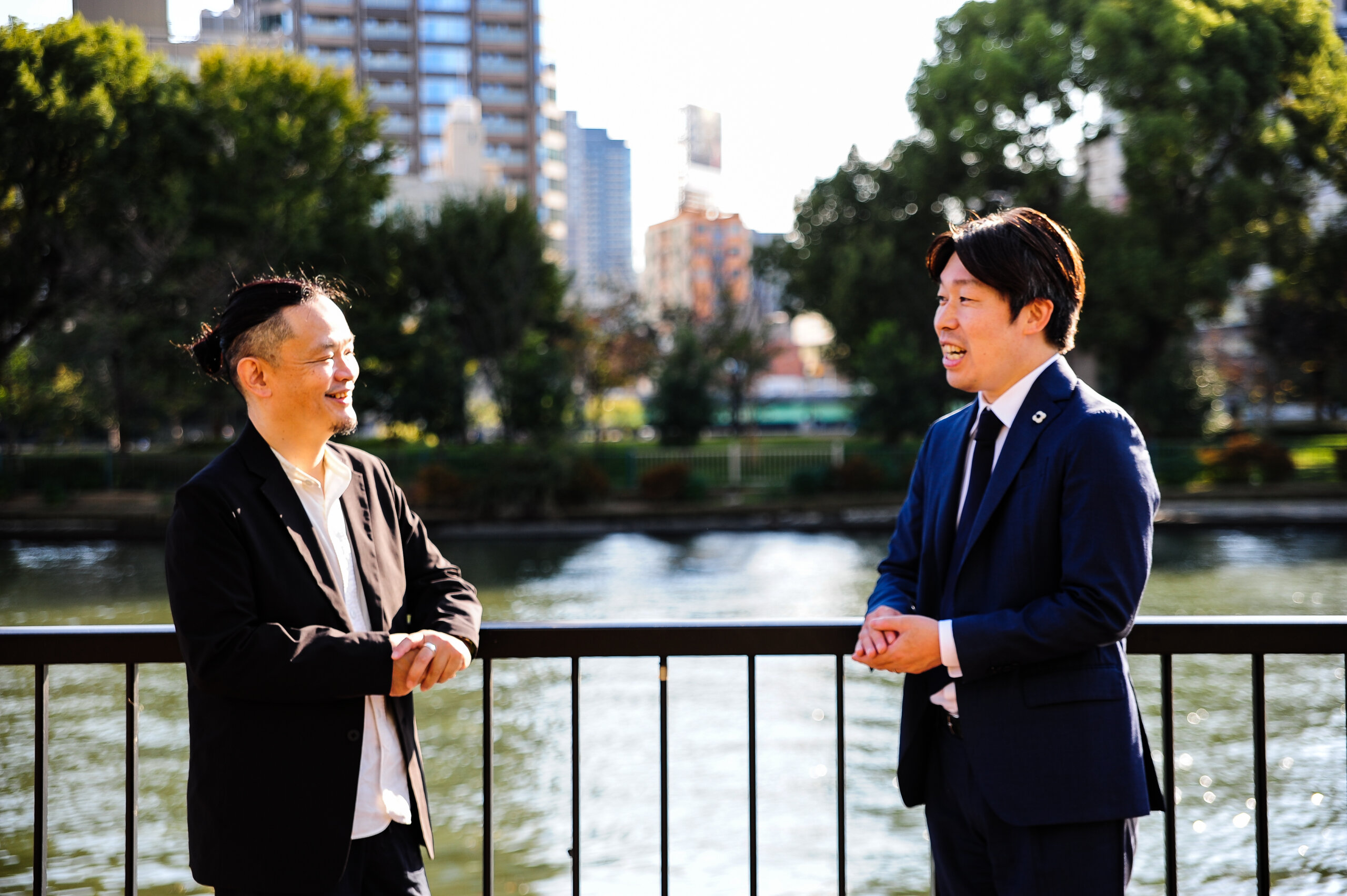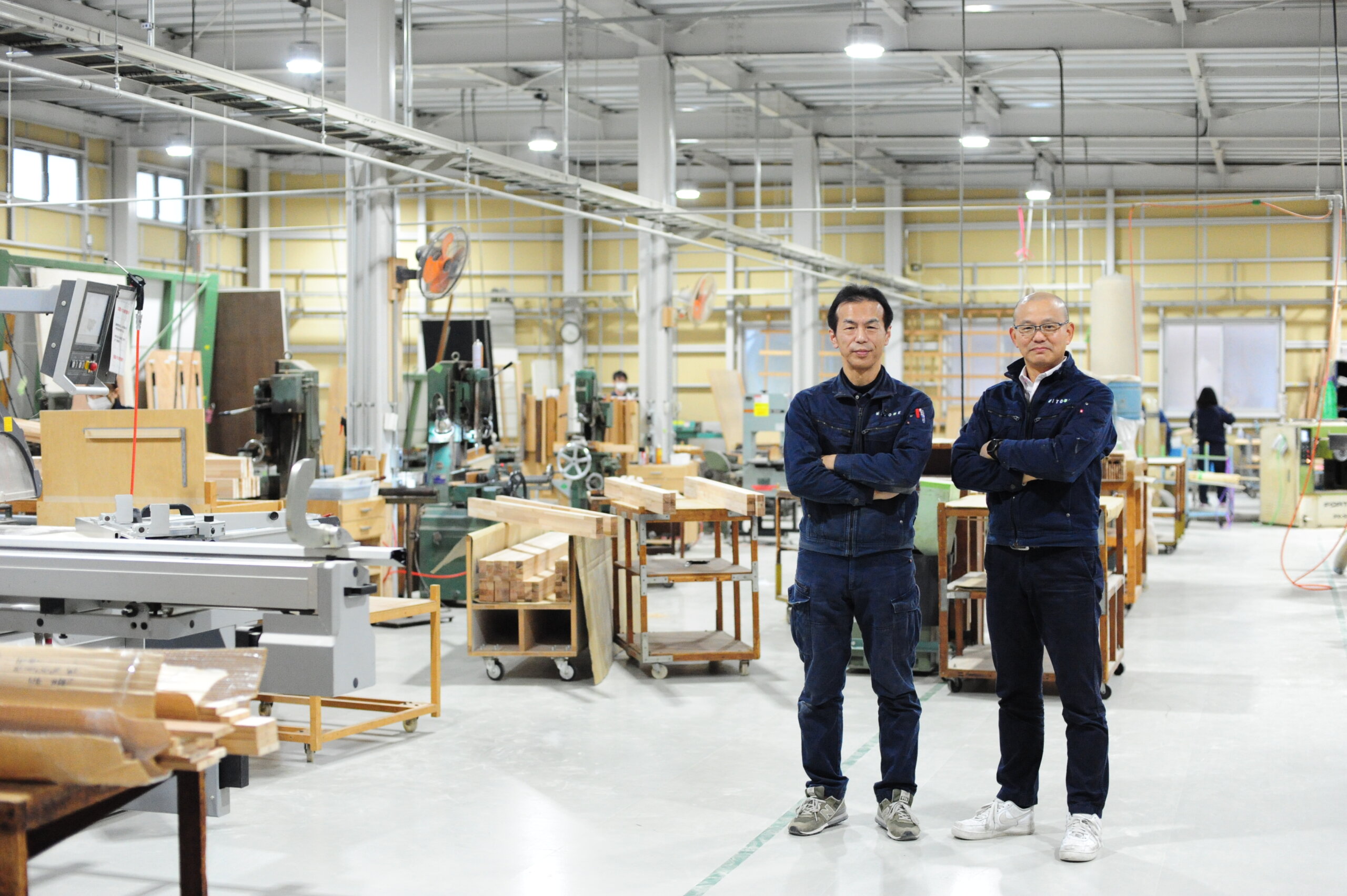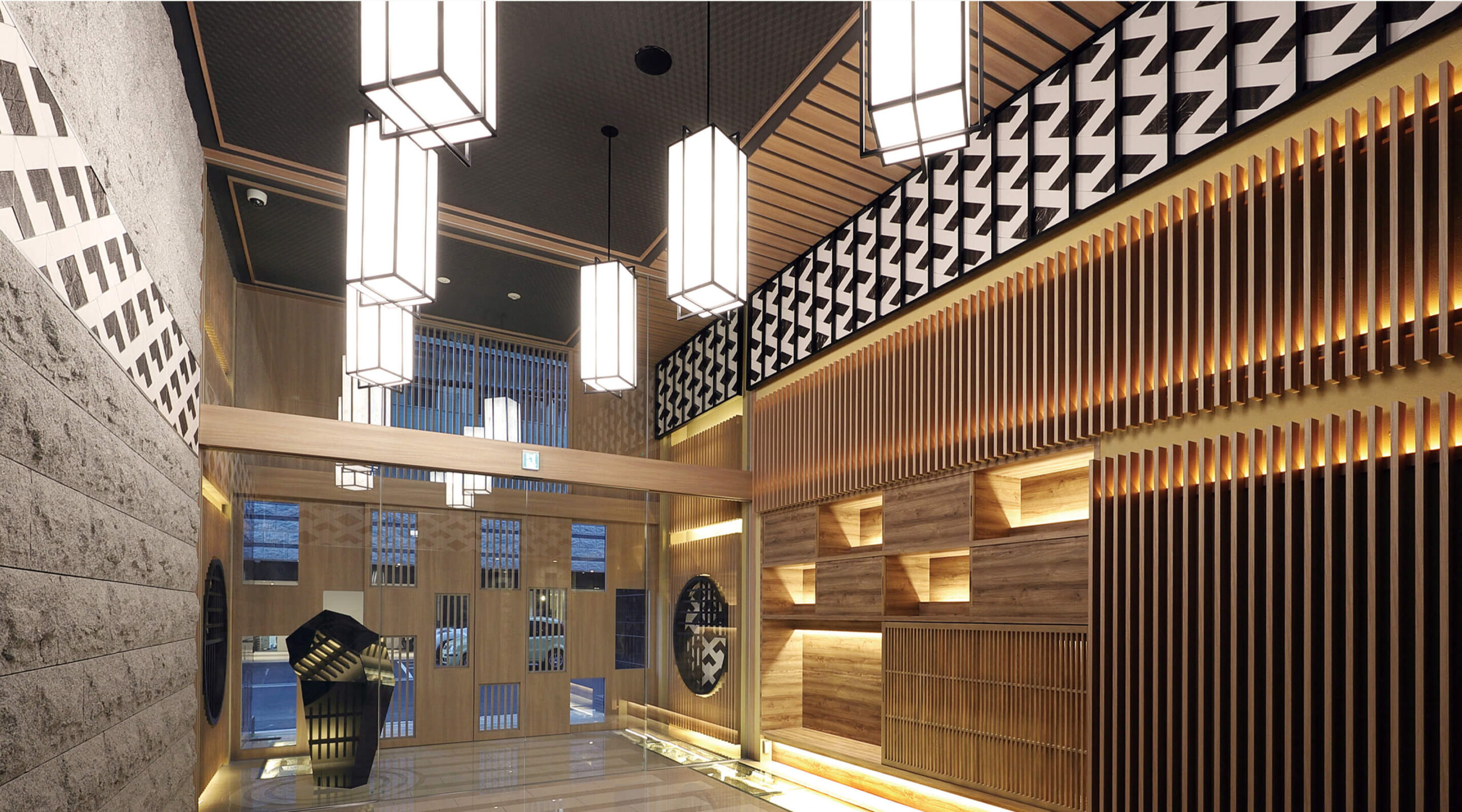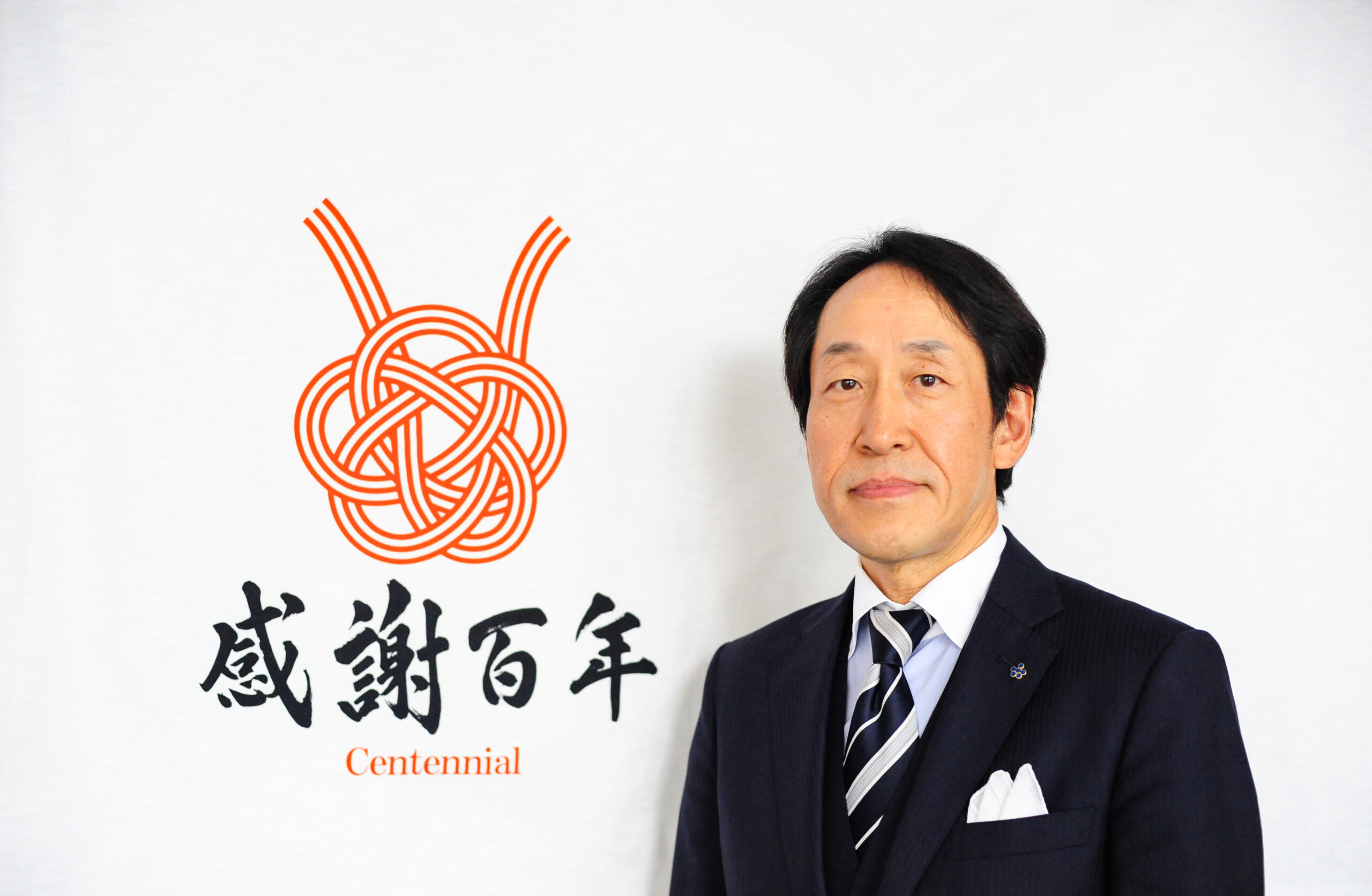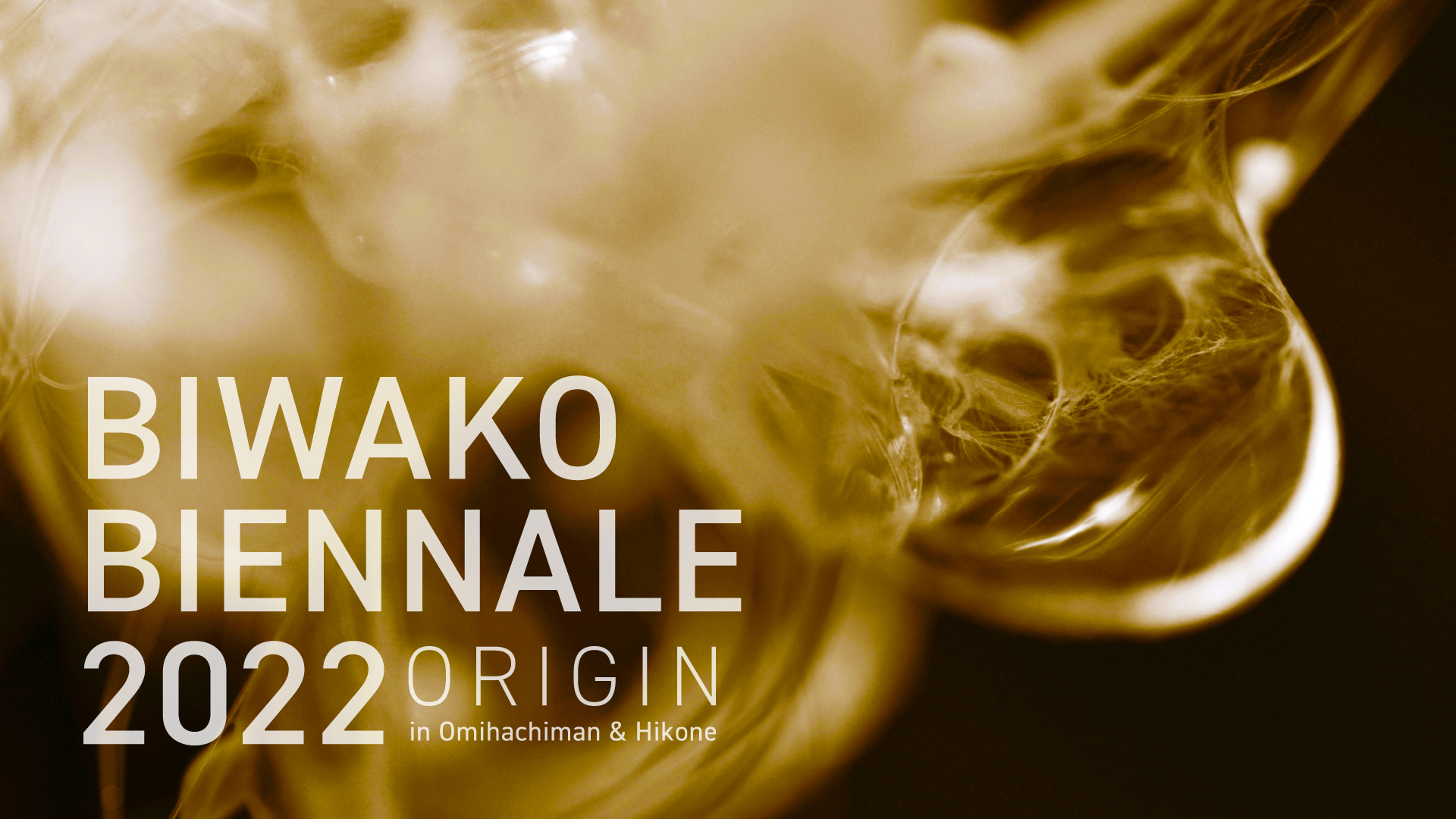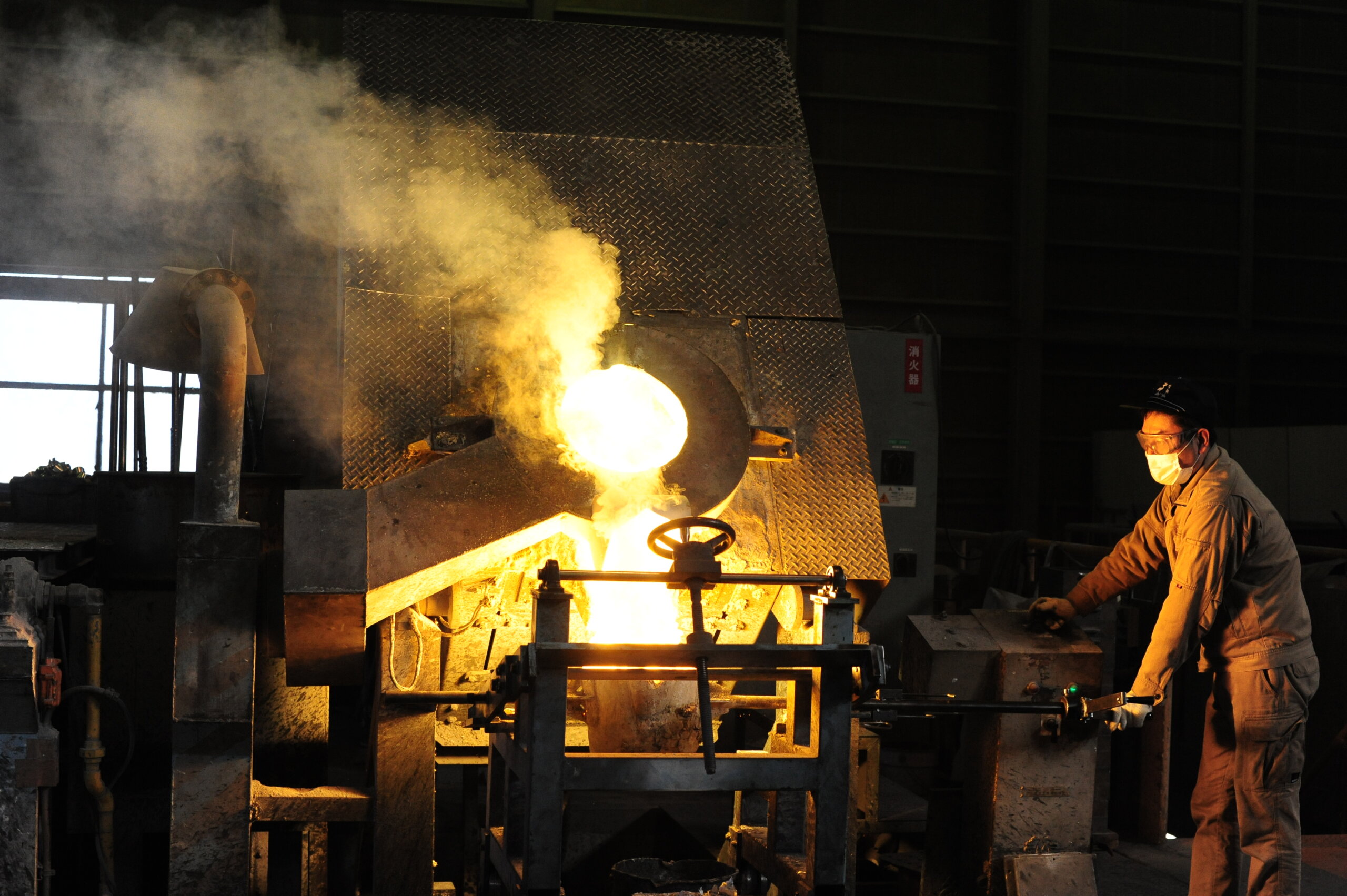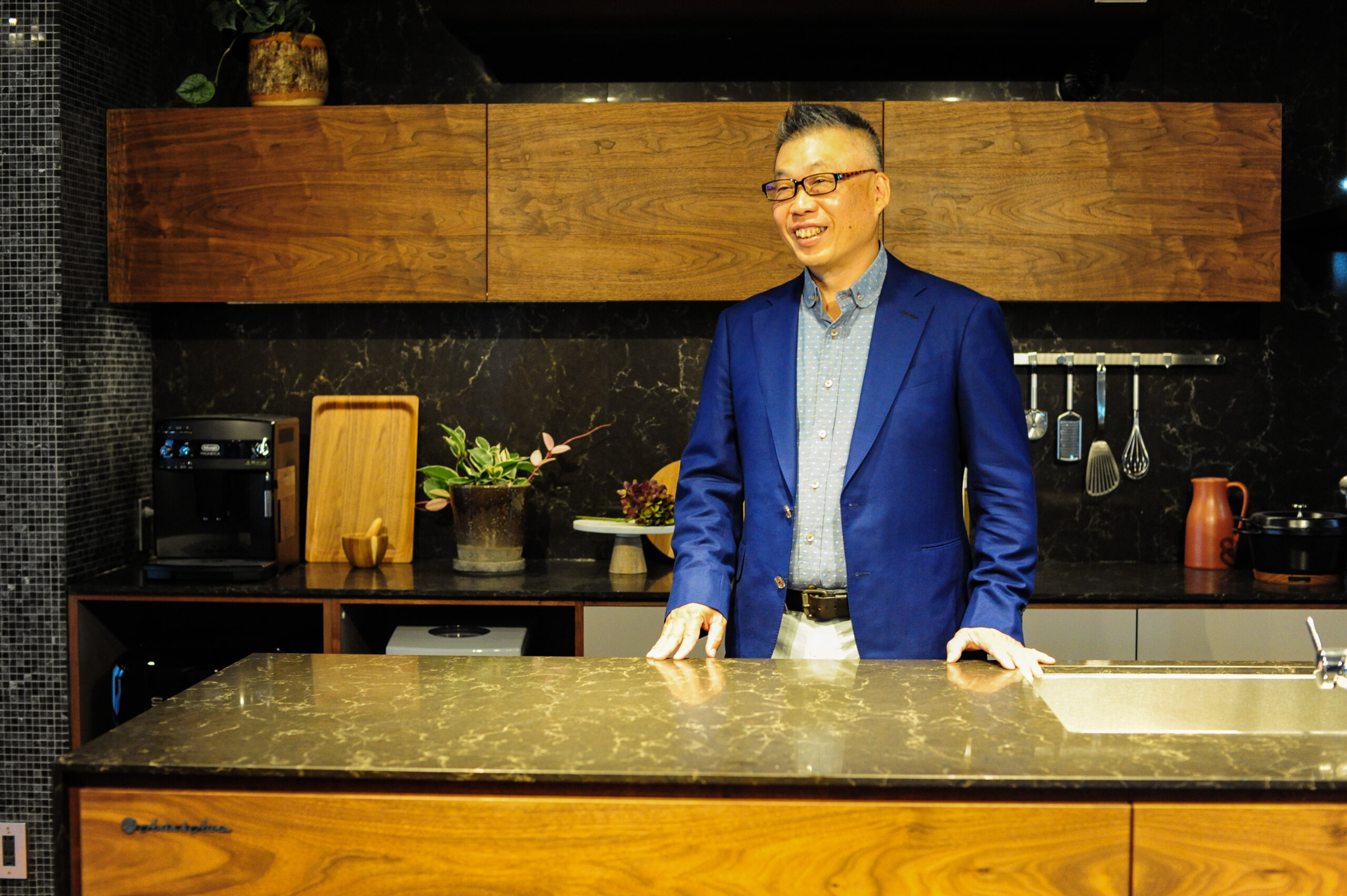What corporate sustainability means to a company
that has been in business for 146 years
2022.12.06
Tekton Discussions: SDGs
How to stay in business over the long term and how to provide pleasant work environments for employees are two issues that corporate managements need to constantly contend with. SDGs (Sustainable Development Goals) are 17 major goals adopted by the UN that have recently been attracting worldwide attention. Aiming to balance the needs of the economy, environment and general public, SDGs are just as applicable to corporate management as they are to the world at large.
In this discussion, Kohei Sadoshima and Satoru Shinno speak frankly about how SDGs and design thinking will affect corporate sustainability in the coming years. Sadoshima is the CEO of Sadoshima Corporation, a trading company founded in 1875 that specializes in ferrous and nonferrous metals. Shinno heads up ArchiXXX Satoru Shinno Architectural Design, a contractor that has worked extensively in property construction and renovation.
・Sadoshima Corporation (Kohei Sadoshima, CEO)
A trading company founded in 1875 and specializing in ferrous and nonferrous metals. Headquartered in Nagahoribashi, Osaka. The company also provides manufacturing services by machining parts and developing original products. Its business is growing both in Japan and worldwide, with a wide range of trading partners that includes building materials producers and electrical equipment manufacturers.
http://www.sadoshima.com/
・ArchiXXX Satoru Shinno Architectural Design (Satoru Shinno)
A contractor that handles a wide range of building and renovation projects for properties such as stores, offices and residences. It designs spaces of abundance to satisfy a variety of different needs. Company representative Satoru Shinno has recently started teaching a course on SDG-conscious architecture at Syusei Technical College. He holds a first-class architect qualification.
https://archixxx.jp/
Providing pleasant work environments: A key SDG theme
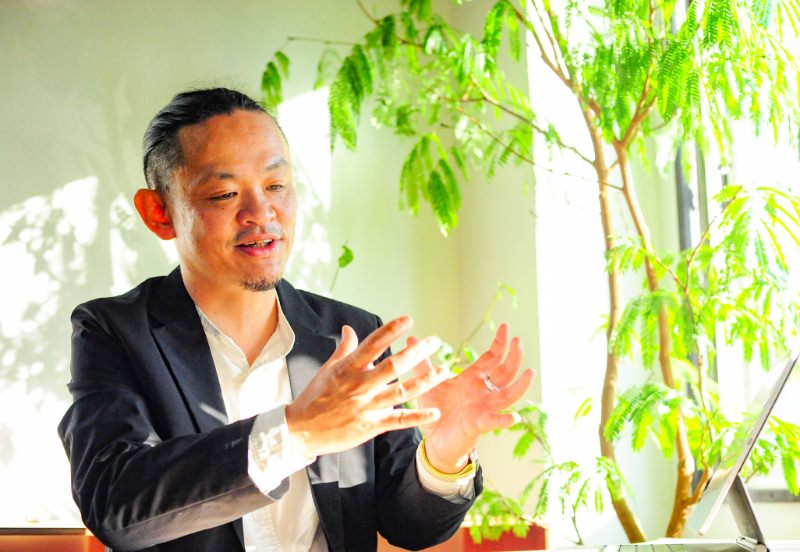
Satoru Shinno (Satoru Shinno Architectural Design)
Shinno:Your company is one of the reasons that Osaka is known as the city of commerce, isn’t it? You’ve got a great corporate culture, and I think that’s why you’ve lasted as long as you have. One hundred forty-six years is a long time.
Sadoshima:That’s right, our longevity has come from our ability to adapt to changes, which is something we value. We do that by setting specific numerical targets as goals. But to accomplish these goals, we need to improve on our strong points and hire the staff that can help us do that. We also need to adapt our in-house environment so that we can evolve along with the changing times.
Shinno:Sure, you’ve got to figure out how you can keep your company up to speed with the wider world around it as time marches on. It’s a really important thing to think about.
─ And SDGs are an area I often hear being spoken of lately.
Shinno: I visit a lot of different companies, and I’m finding that many of them still haven’t figured out how to achieve their SDG goals. I’d say that companies working on SDG goals should start with the things they know best. It’s important not to overdo it. How about your employees—what’s their level of SDG awareness?
Sadoshima: I’d say they have a good level of environmental awareness. We’ve recently started working on the things we can change most easily, like switching some of our company vehicles to hybrids and using solar-powered batteries for power storage.
Shinno: That’s great. Corporate-led environmental protection measures are exactly the sort of work the SDGs are calling for, aren’t they?
Sadoshima:It’s now been 146 years since our founding, so we’re planning to mark our first century-and-a-half in business with a headquarters renewal project that will involve major changes ranging from renovating our offices to reconfiguring systems. We’re planning to rearrange the layout of our entire three floors, including conference rooms and offices. We’re thinking about creating a café and multipurpose space. We also want to review our work environment by going paperless, creating open-plan office space, converting in-house paper documents into electronic data—that sort of thing.
Shinno:I see. Well you know, companies are made up of people, and the eighth goal of the SDGs is ‘Decent Work and Economic Growth.’ I think companies looking to achieve their SDG goals just need to give employees a pleasant work environment that lets them feel motivated. Work environments also need to be kept up-to-date with the modern world.
Asking questions in the era of design thinking
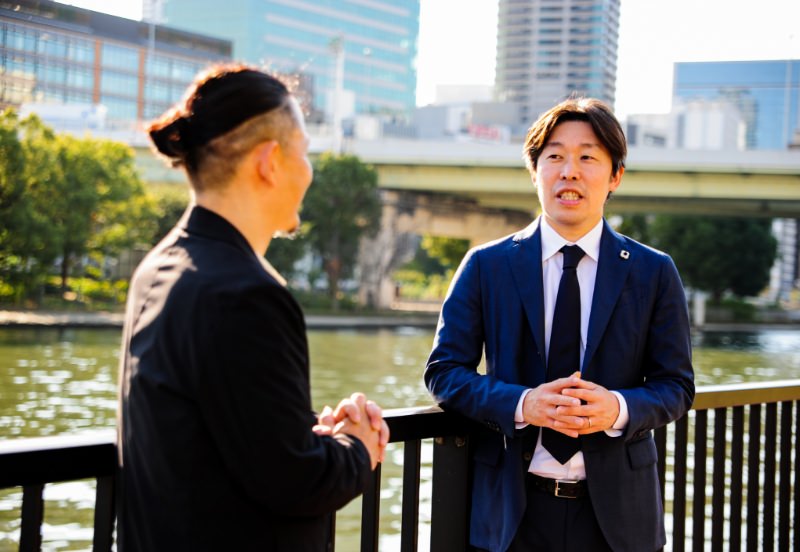
Kohei Sadoshima (CEO of Sadoshima Corporation)
Sadoshima: I’d really like to hear your thoughts on office renovation.
Shinno:When you renovate an office, it’s important to start by removing all of the design concepts previously in place there. Going open-plan lets you create office space without fixed seating, letting workers take their laptops or other supplies and sit wherever they want to work. Open-plan environments have a number of benefits. They let workers choose different work environments for different moods. They make it easier for different departments to communicate. They can also be invigorating and help workers come up with new ideas.
Sadoshima: Our conference rooms, document rooms and locker rooms haven’t been updated since the building was built. So I want to get them up-to-date—make them into a pleasant environment for the modern employee.
Shinno:If you have a space that’s no longer needed for its original function and is just being used for storage, one renovation you might consider is to turn it into a one-person break room. Workers feeling under the weather could work there in isolation, making the space useful again.
Sadoshima:Absolutely. It’s good to think flexibly and look at things from new perspectives. Being flexible is the key to growing a company. In a broader sense, creating a pleasant work environment for all employees could be viewed as corporate design.
Shinno:Corporate design is really design done for the future, don’t you think? I think design is now going to be just as much about asking questions as it is about solving problems. If you were designing an office for example, you could make design and architecture suggestions by envisioning the future and asking if your ideas might make work more engaging for employees. Say if a company has a lobby café that makes really good coffee for example, you might even find employees flocking to it on their days off! [Laughs] Before you know it, people coming into the office for non-work reasons could become routine.
Sadoshima:Interesting. No doubt that would also make employees more loyal to the company.
Shinno:So what would a company with a pleasant work environment actually look like? Besides its work spaces, could it also have non-working spaces for its people to inhabit? Those are what sociologists refer to as the third place—a space that’s neither home nor the workplace. What if you could get really good coffee at a place in the lobby that also had a collection of interesting books available? That feature alone might be enough to bring the company closer to its people.
Sadoshima:It might also give the company a competitive edge. I mean, a better work environment would also mean higher employee satisfaction.
Shinno:That’s right. Spaces have the power to change the relationship between companies and people. Boosting employee satisfaction to the point where employees would rather work nowhere else will naturally affect how they work and benefit in-house morale. And word spreads faster than ever nowadays. So becoming known as a great place to work will naturally make a company a magnet for the right people, which should make hiring easier.
Passing on a better legacy to the next generation
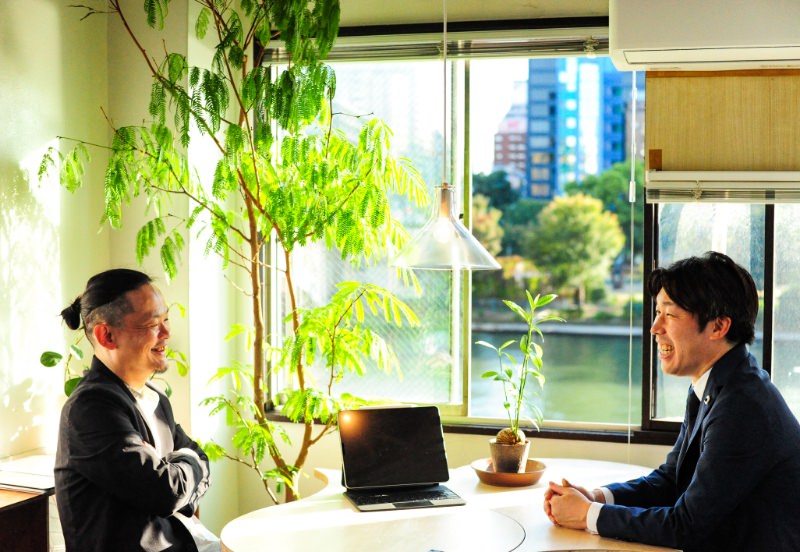
Sharing a lighthearted moment in the office of ArchiXXX Satoru Shinno Architectural Design
Sadoshima:For a specialized trading company, human resources mean everything. We have about 220 employees. But there are always worries when hiring new graduates. We’ve recently been getting a lot of questions about working styles, days off, whether employees can work from home and other areas related to fringe benefits. Student attitudes have changed a lot since ideas like work-life balance became trendy.
Shinno:Yes, and vocational schools and universities have also been making it a point to teach students about SDGs. I teach a course at Syusei Technical College. It holds an annual lecture series event called the S Seminar that’s designed to give students a better understanding of SDGs. It has lectures given by representatives from companies that work on SDGs in the context of many different industries besides just construction. Some of the speakers have come from companies working in sectors such IT, logistics and apparel. Job interviews are also giving students more opportunities to talk about their own experience with SDG work, so they seem to be interested in companies working on SDGs.
Sadoshima:Right. SDGs could very well be a term that companies should pay attention to if they want to be a top pick for job seekers.
Shinno:What about mid-career hiring? How much of your workforce has started as mid-career hires?
Sadoshima:Forty percent. The other 60% are new graduates. But mid-career hiring is an area we’re also focusing on. Our employees are on the older side, with an average age of 45. We’ve got an older workforce partly because we’ve got a lot of workers who’ve been with us many years, but also because we hire a lot of older mid-career employees with specialized knowledge and experience.
Shinno:Makes sense. As someone who works in the construction and design industry, I’d say that companies in this sector prefer mid-career hires because they can start providing value right from day one.
Sadoshima:I know what you mean. I just hired a sales rep who’s 63. He’s flexible, versatile and has a lot of energy. I think he might be the hardest worker in the company. [Laughs] The 65 and older age group has a lot of experience. I want to start putting it to good use. I want to have a mix of young and experienced workers, creating a well-balanced combination that works well for the company.
Shinno:That’s right, age is going to be a key point to consider in the context of business continuation, what with Japan’s increasingly declining birthrate and aging population in the coming years. Another element that will likely be important in the years ahead is having work environments that are accommodating for workers returning to work after retirement. Making arrangements for older workers will be important for ensuring that their legacy gets passed on to the next generation.
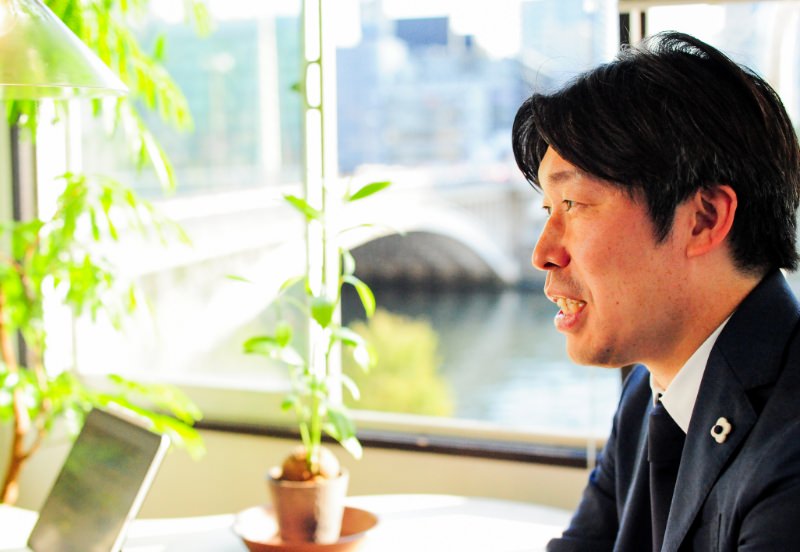
“We’re always looking for eager and motivated candidates.” (Sadoshima)
Sadoshima:On that note, I should mention that I’m the sixth generation in my family to head up Sadoshima Corporation. My predecessor was my father, who still comes to work about three days a week. He even comes to all the meetings. His dedication to his work really impresses me.
Shinno:I can imagine. [Laughs] I like my job these days too. I want to keep doing it as long as I can.
Sadoshima: I get it. That’s an attitude that you really have to be a company founder to understand. As the sixth generation to lead my company, my job is to carry on the mission of my predecessor and pass on a better legacy to the next generation. Only a company’s founder has to work on going from zero to one. My job is to go from one to two (or better yet, ten). I’m grateful for this role I’ve been given. Our groupwide sales are now about 80 billion yen. Over the next four years leading up to our 150th anniversary, we’re looking for sales of about 100 billion yen and operating income of 2 billion yen. Those are the target figures. We want to adapt to the economy while at the same time achieving the SDG goals that will link us to the next generation.
Shinno:Exactly. It’s by passing on your legacy to the next generation that you’ll create a sustainable company. It will be important for the people tasked with receiving this legacy to think about how they’re going to connect the milestones of each era, and how they’re going to make changes.
Sadoshima:I want to create an environment that can accommodate a highly diverse group of people—whether young or experienced, and regardless of job or role. Being a company that gives its employees and outside stakeholders a feeling of confidence in its future is a crucial requirement for becoming a sought-after name and even just for remaining in business.
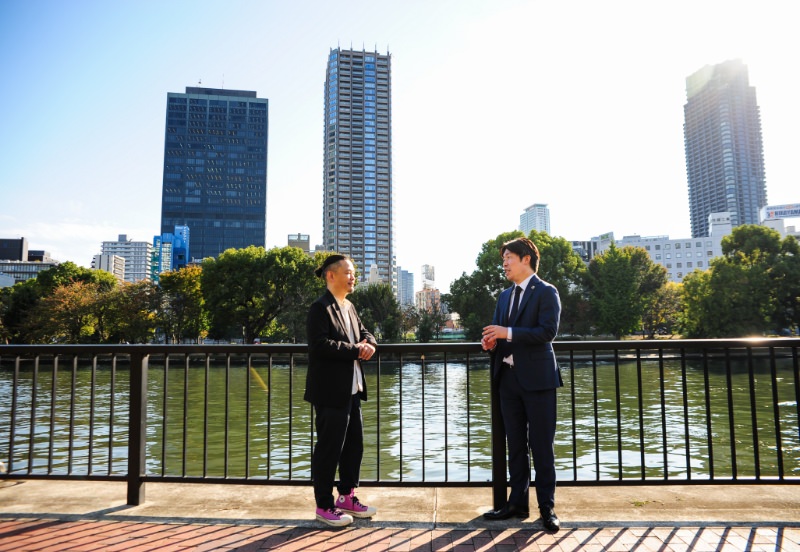
Minami-temma Park lies on the Okawa River in central Osaka. The Nakanoshima and Kitahama commercial complexes can be seen in the background.



